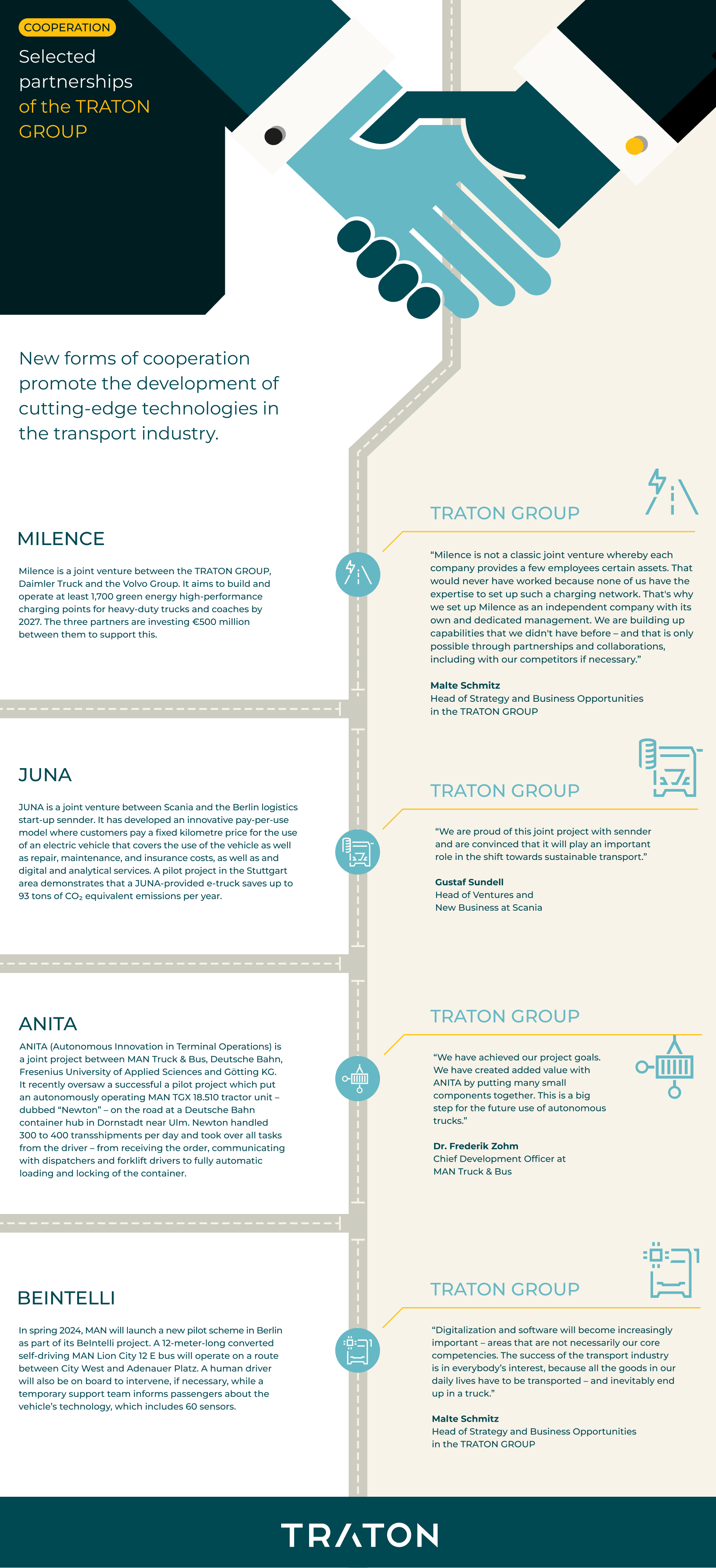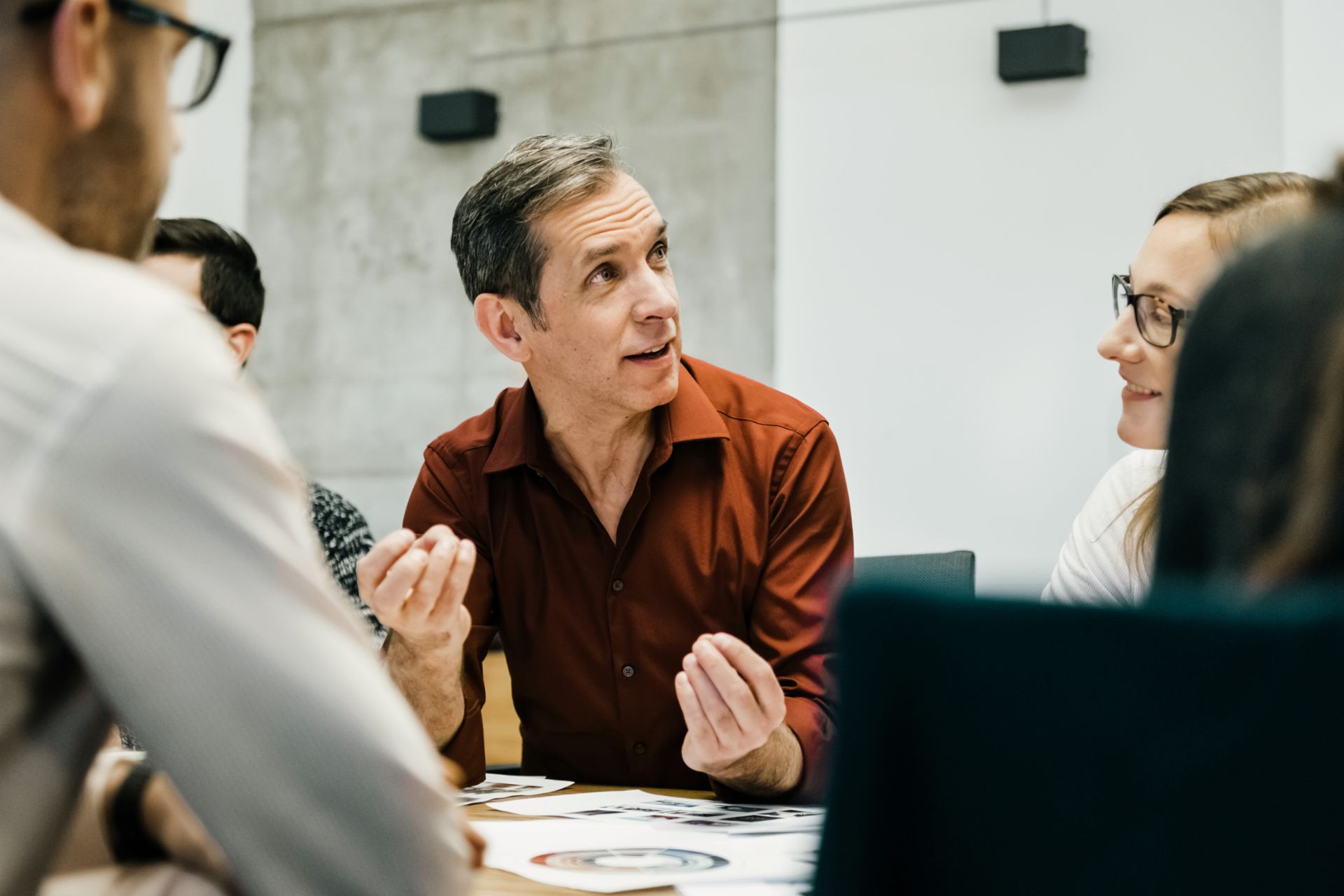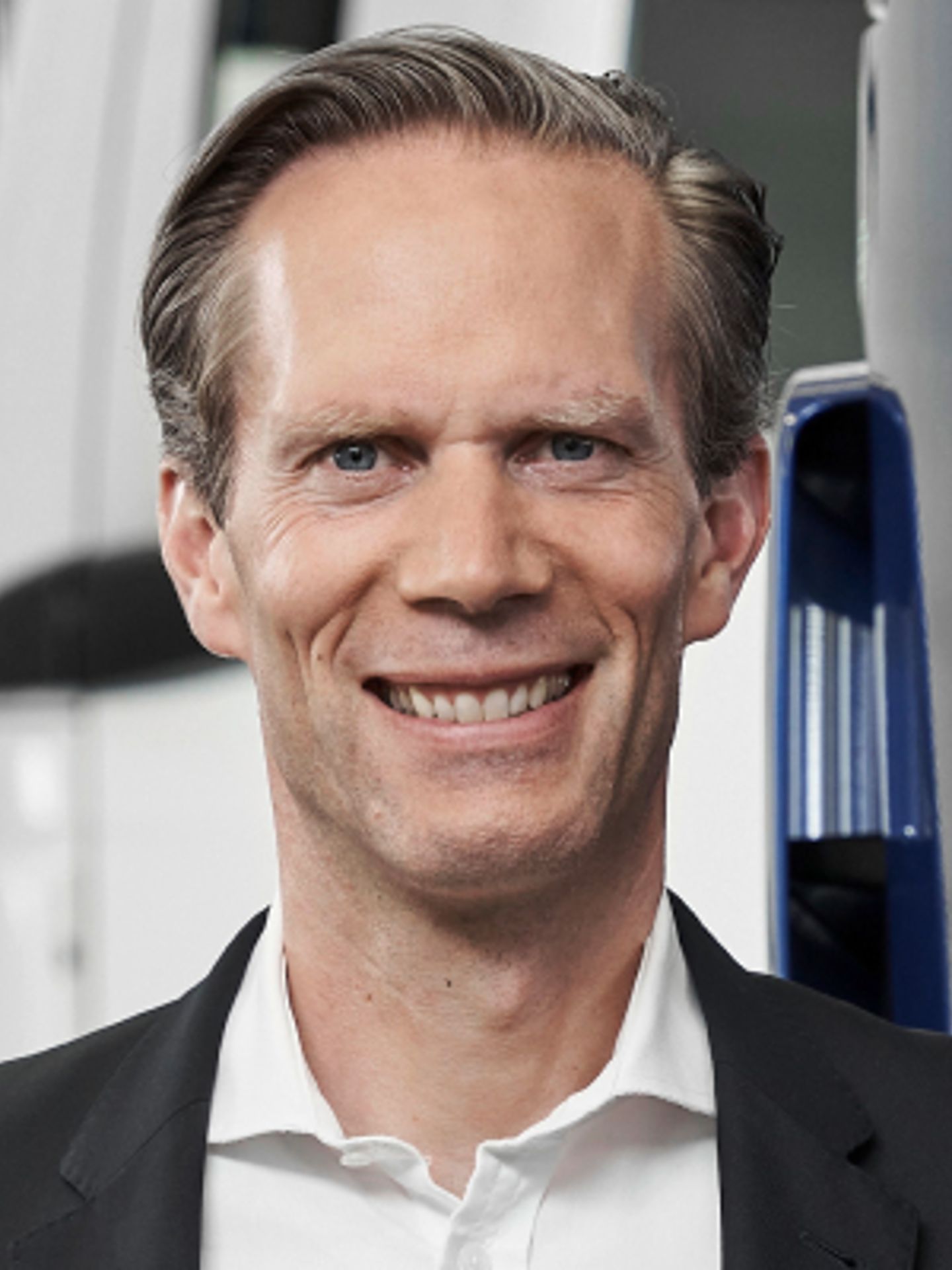The transport revolution, proclaimed as a central pillar of our response to global climate change, requires new, battery-powered electric vehicles and supporting infrastructure. At the same time, customers who are hesitant to switch to e-trucks due to their higher purchase costs must first be convinced of the advantages of green technology with suitable incentives.
Experts estimate the cost of setting up a Europe-wide fast-charging network for e-trucks at ten billion euros. This is an investment requirement that can hardly be met by a single company. “We quickly realized that we can't invest ten billion alone. An investment on this scale demands collaboration with other market players, who are facing the same challenges,” says Malte Schmitz, Head of Strategy and Business Opportunities at the commercial vehicle manufacturer TRATON.
Milence – a charging infrastructure for Europe
The result of these considerations is Milence - a joint venture between TRATON, Daimler Truck and the Volvo Group. Together, the partners want to establish a network of 1,700 fast-charging stations for battery-powered electric commercial vehicles in Europe by 2027, thereby making an important contribution to the development of a pan-European charging infrastructure. However, this is an ambitious goal for which the companies involved are breaking completely new ground.
“Milence is not a classic joint venture whereby each company provides a few employees,” explains Schmitz. “That would never have worked because none of us have the expertise to set up such a charging network. That’s why we set up Milence as an independent company with its own and dedicated management. We are building up capabilities that we didn’t have before – and that is only possible through partnerships and collaborations, including with our competitors if necessary.”
Milence is the TRATON GROUP’s most ambitious cooperation project to date, but by no means the only one. Via various global initiatives, resourceful colleagues are looking for solutions to the transport challenges of today and tomorrow.
JUNA – optimized operation thanks to pay-per-use model in the Stuttgart area
JUNA, a joint venture between Scania and the Berlin logistics start-up sennder, is also already at the trial stage. It addresses the problem that the higher purchase costs for an e-truck - two to three times higher than for a combustion engine - make customers reluctant to switch to battery-electric commercial vehicles. JUNA has developed an innovative pay-per-use model for this, where the customer pays a fixed kilometer price for the use of an electric vehicle provided by JUNA, which covers not only the use of the vehicle itself but also all costs for repairs, maintenance, insurance and digital and analytical services. For example, JUNA can also develop suggestions for the optimum route for the rented electric vehicle to reach its destination on request.
A pilot project in the Stuttgart area is already delivering promising results. The e-truck provided by JUNA for a transport company completes the same routes as its combustion engine predecessor and saves up to 93 tons of CO2 equivalent emissions per year. “JUNA is the result of collaboration between two companies with complementary expertise,” says Gustaf Sundell, Head of Ventures and New Business at Scania. “We are proud of this joint project with sennder and are convinced that it will play an important role in the shift towards sustainable transport.”
ANITA – autonomous operation at a container hub in Dornstadt near Ulm
ANITA (Autonomous Innovation in Terminal Operations) is a joint project between MAN Truck & Bus, Deutsche Bahn, Fresenius University of Applied Sciences and Götting KG. It recently oversaw a successful pilot project which put an autonomously operating MAN TGX 18.510 tractor unit – dubbed ‘Newton’ – on the road at a Deutsche Bahn container hub in Dornstadt near Ulm. The truck was able to drive smoothly and autonomously in the real environment of the container handling facilities, taking on 300 to 400 transshipments per day and every task from a human driver. This included receiving the order, communicating with dispatchers and forklift drivers, to fully automatic loading and locking of the container.
The tasks Newton solved went far beyond driverless driving: in addition to detecting obstacles with LiDAR, radar and nine cameras, the entire communication process also had to be digitalized. As an additional challenge, the autonomous truck also had to prove itself under real-time conditions, i.e., during the ongoing operation of the container facility. During the six months of testing, Newton proved itself to be completely up to the task. “We have achieved our project goals,” concludes Dr. Frederik Zohm, Chief Development Officer at MAN Truck & Bus. “We have created added value with ANITA by putting many small components together. This is a big step for the future use of autonomous trucks.”
“We have achieved our project goals. We have created added value with ANITA by putting many small components together. This is a big step for the future use of autonomous trucks.”
Dr Frederik Zohm, MAN Chief Development Officer
BeIntelli – an autonomous city bus for Berlin
MAN's development department is hoping for a similar success in Berlin, where a self-driving bus will soon be in operation in spring 2024. As part of the overall ‘BeIntelli’ project, which was launched in 2021, a 12-meter-long converted self-driving MAN Lion City 12 E bus will operate on a route between City West and Adenauer Platz past the Brandenburg Gate. During the test phase, there will also be a human driver on board who can intervene, if necessary, while a temporary support team will inform passengers about the vehicle’s technology, which includes around 60 sensors and various communication components. MAN's co-operation partners for this project are the Technical University of Berlin and IAV GmbH Ingenieurgesellschaft Auto und Verkehr.
“Digitalization and software will become increasingly important - areas that are not necessarily our core competencies. In future, we will therefore have to focus much more on partnerships with companies that are strong in these areas and with whom we can develop new transport solutions that are also in demand from our customers.”
Malte Schmitz, Head of Strategy and Business Opportunities at TRATON
For Malte Schmitz, it is clear that the development of the transport industry will be even more focused on partnerships such as these in the future: “Digitalization and software will become increasingly important – areas that are not necessarily our core competencies. In future, we will therefore have to focus much more on partnerships with companies who are strong in these areas and with whom we can develop new transport solutions that are also demanded by our customers. It’s clear that the success of the transport industry is in everybody’s interests, because all the goods in our daily lives have to be transported – and inevitably end up on a truck.”






